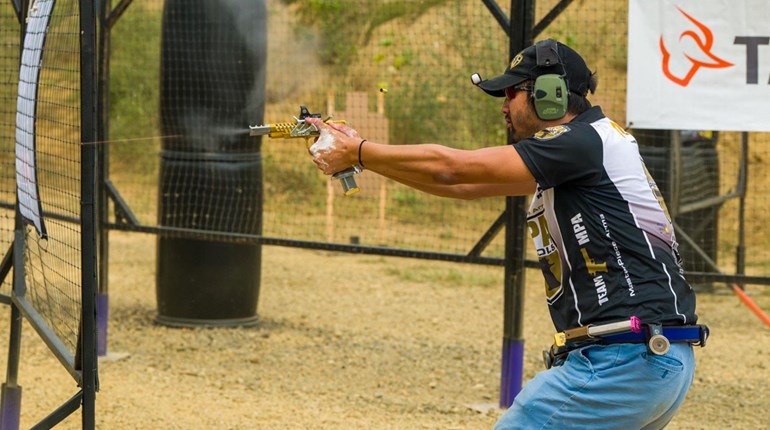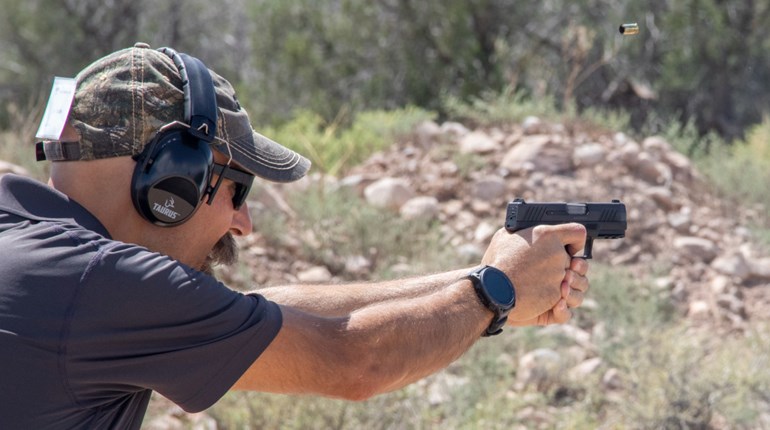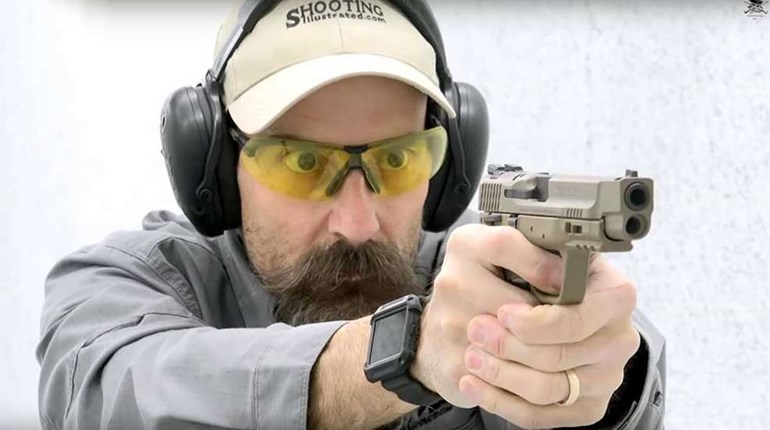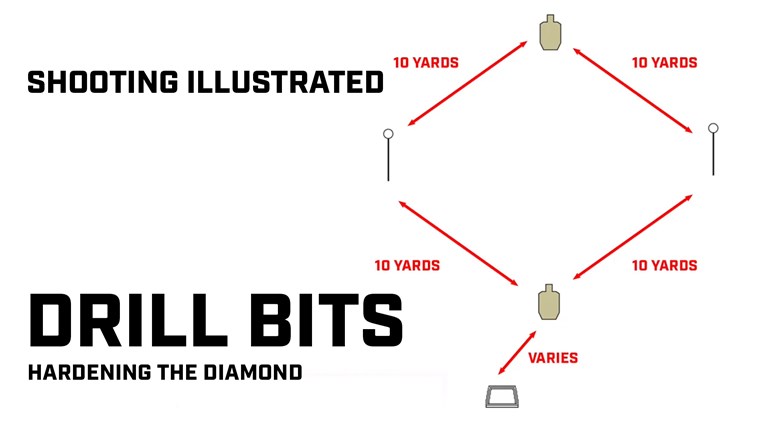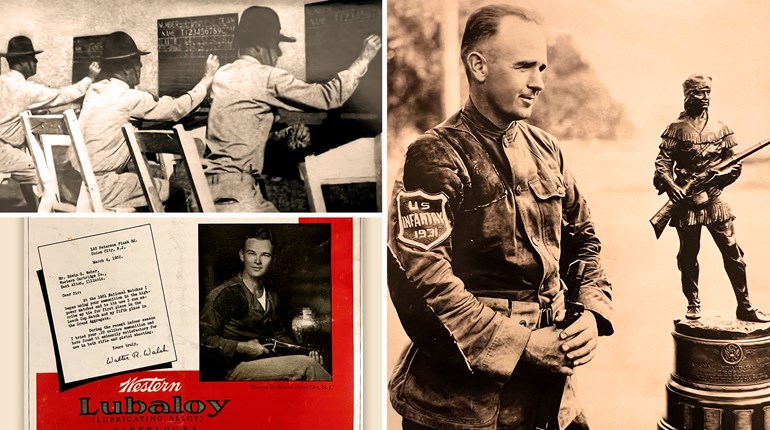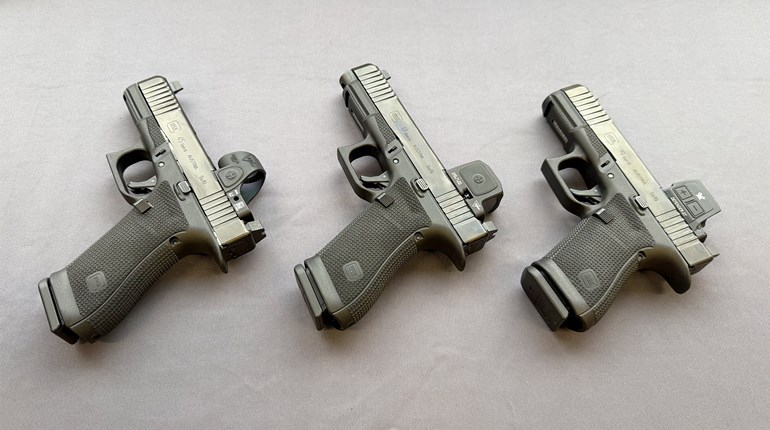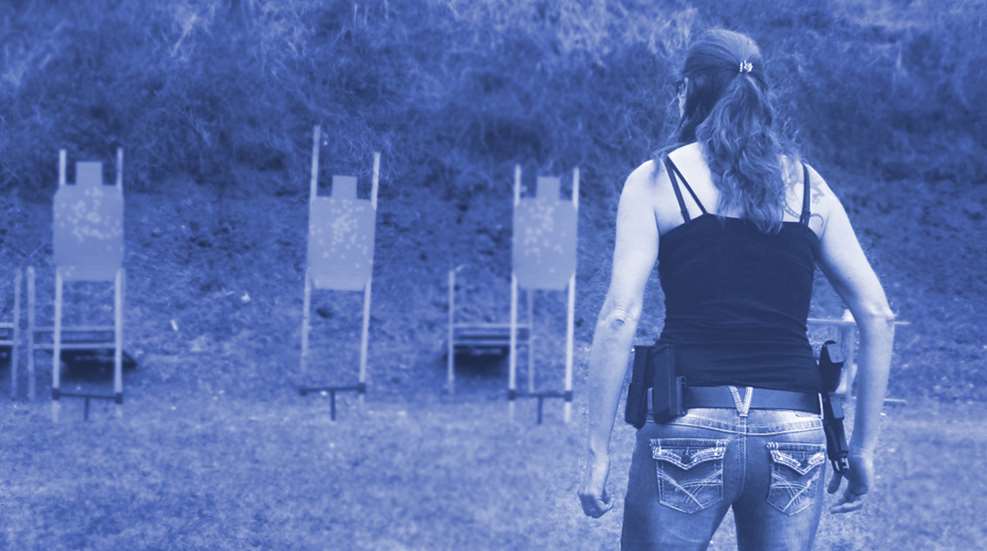
Every Action Pistol game will present shooters with multiple targets to be shot from one shooting position. It may be two to eight paper targets, while steel targets are often in three to five target sets. Or it may be a combination of paper and steel. Regardless of the array, there's a number of targets to be shot from one spot where the shooter can just plant their feet and shoot!
Newer shooters often view them as ‘individual targets’ and approach them one at a time. Experienced shooters have a different approach. To them it's a continuous target to be smoothly flowed through. And you don't have to watch the shooter to determine which category they're in—you can just listen.
The shot sequence from a newer shooter facing a three paper target array will be bang-bang, pause to acquire the next target, then bang-bang and pause again, and then bang-bang. The upper-level shooter's sequence will be bang-bang-bang-bang-bang-bang—and done! And, they'll have solid scoring hits.
The ability to quickly transition between multiple targets and deliver accurate hits takes training and practice. Here are two six-round drills, applicable to semi-autos and revolvers that will start shooters down that path.
Drill 1
Set three paper targets appropriate to the game being played (IDPA, USPSA, and ICORE) at 7 yards and spaced 3 feet apart edge to edge. Align yourself with the center target. At the buzzer (from a two-hand freestyle grip) place one round into the left-side target, one in the center, one in the right, then transition back to the left-side target and repeat one round in each for a total of six rounds.
After a few runs, reverse the procedure and start on the right-side target—one round in each then transition back to the right target and repeat. These drills can be shot from a low-ready position or from the holster. Many upper-level shooters recommend a holstered start since it continues to reinforce the key fundamentals of draw, grip, and presentation.
Intense focus on the front sight is critical. So too is a proper stance. The feet don't move once the shooting starts. The upper body becomes the ‘turret’ that pivots smoothly to drive the gun from target to target.
Upper-level times from a low-ready position will be around 2.5 seconds with perfect scoring hits. Add .75 seconds for a holstered start.
Drill 2
The first drill will begin to ingrain the fundamentals of quick transitions and build the shooter’s confidence. This drill transitions to actual competition, where most paper targets require two scoring rounds.
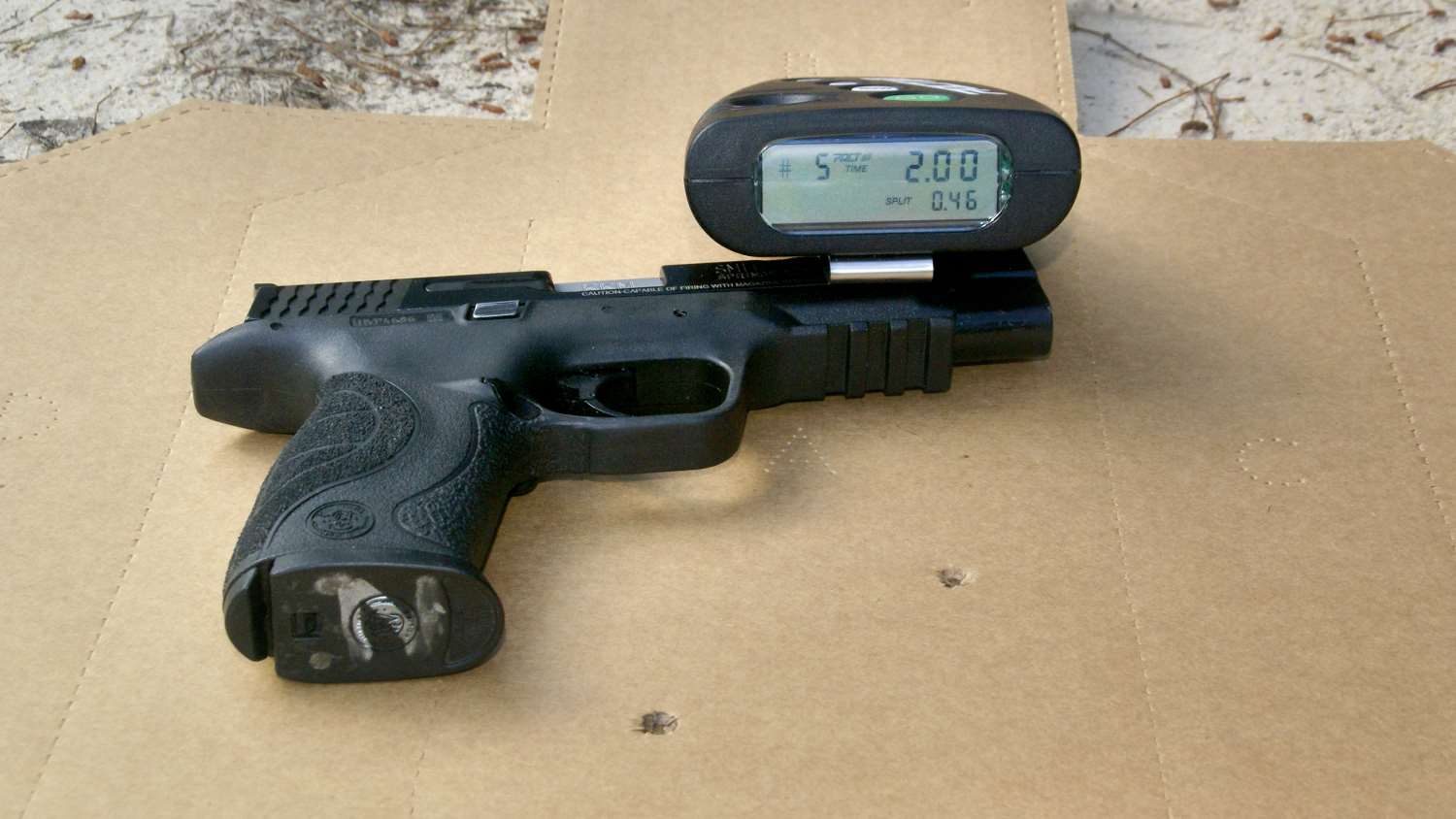
Set up three appropriate targets spaced 6 feet apart at 10 yards and face the center target. At the buzzer (with a freestyle hold from the holster) double tap the left target, then the center, then the right, for a six-round total. After a few runs reverse the order and shoot right to left. Shoot this drill from a holstered start to duplicate actual match conditions.
The increased target distance and spacing will force a greater degree of focus on the shooter's part and improve their transition skills. The overall time and target score are still important, and upper-level shooters will deliver six perfect hits in around 3.5 seconds. But a second set of numbers can now be analyzed—transition time and split time; both of which will be displayed on any decent timer.
There will be six times displayed after each run. The first time is the initial shot from the holstered or low-ready start. Is there a significant difference between them on multiple runs? If so it could indicate an inconsistent draw stroke and/or presentation. Did the faster times result in a shot outside the O or A zone? That could show the shooter is rushing the shot. Analyzing that first shot time will help you refine and improve your draw stroke to produce perfect hits.
The second time shown will be the ‘split time’—the second shot on the first target. The fourth and sixth times displayed on the timer's review function will also be the splits (second shots) on the two remaining targets. Those times should all be roughly the same. This indicates smooth recoil and trigger control. If they vary significantly it indicates that the shooter is not flowing smoothly and the rhythm and timing is off. This is simply a lack of focus.
The actual time of the splits, and the score they produced, is another matter to consider. A sub-.30 split is good. But if it resulted in a hit outside the O or A zone it's bad. That will cost a full one second penalty in ICORE and (as this is being written) IDPA is strongly considering raising the -1 hit from a .5 second penalty to a full second. If a .30 split doesn't hit the O or A zone, but a .45 split does, the shooter's score will be better with the .45 split. It's just a matter of smoothing out the shooting rhythm.
The third and fifth times displayed will be the actual transition times between targets two and three. They should be roughly the same. If they vary significantly it means the shooter is not finding those targets smoothly and is having to hunt for them.
The timer and targets don’t lie. They can tell a shooter much. And there is one more time to consider.
Are the times and scores better shooting left to right, or right to left? There can sometimes be a noticeable difference. Right-handed shooters often score better shooting right to left because the left eye is in full play and leading the gun to help quickly find the next target. The reverse is true for southpaws. Many newer shooters automatically shoot left to right because that’s the way we read the English language and it seems natural. But analyzing the times and score may show a shooter a better way.
Readers should check out author Chris Christian’s previous action shooting articles SSUSA has featured including focusing on precision, understanding the power factor, double tap drills, and the right Rx for aging eyes.













